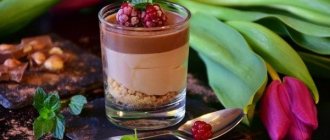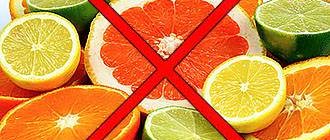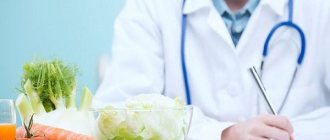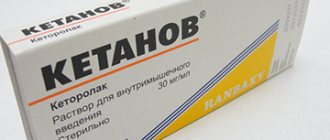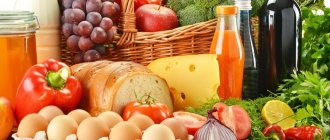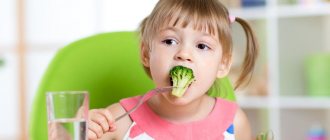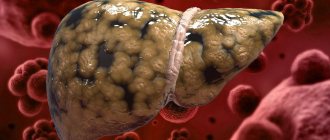- Why diet
- Nutrition in the acute stage of pancreatitis
- Diet rules for chronic pancreatitis
- How to build a diet for pancreatitis
The correct organization of daily nutrition is of great importance for people suffering from pancreatitis. After all, this disease affects the pancreas. It belongs to the organs of the digestive system and is responsible for the secretion of a complex of enzymes that act in the lumen of the duodenum. Therefore, inflammation of this organ is accompanied by impaired digestion of essential nutrients (nutrients) and the development of secondary intestinal disorders, and this requires compliance with some dietary restrictions.
In medicine, the system of therapeutic and preventive nutrition for pancreatitis is called table No. 5p according to Pevzner. He may have varying degrees of dietary restrictions. After all, the diet menu for pancreatitis is selected taking into account a number of factors. The diet depends on the stage and form of the disease, the severity of the main symptoms and the degree of enzyme deficiency. When pancreatitis is combined with cholecystitis, diet 5a is usually prescribed.
Why diet
Treatment and nutrition for pancreatitis are interrelated concepts. A properly composed daily diet allows you to solve a number of important problems:
- Elimination of excess load on the inflamed pancreas, which is ensured by fractional meals and the exclusion of difficult-to-digest foods. With pancreatitis, this is a primary task.
- Ensuring complete digestion of basic nutrients. A harmoniously composed menu for pancreatitis ensures the supply of the required amount of nutrients, and an adequate amount of food consumed and balanced dishes contribute to their sufficient digestion under the influence of pancreatic enzymes.
- Prevention of re-exacerbation, because relapse in this disease in the vast majority of cases is associated with errors in nutrition. Therefore, in case of chronic pancreatitis, it is advisable to adhere to the diet constantly.
- Reducing the risk of developing diabetes. The fact is that the pancreas belongs not only to the digestive system, but is also an endocrine (hormonally active) organ. Its tissues contain special formations - the islets of Langerhans. They produce the hormone insulin, and when its production is insufficient, a person develops diabetes mellitus. Chronic or frequently recurring inflammation is fraught with gradual death of functionally active cells, including the islets of Langerhans. That is why pancreatitis is considered one of the main risk factors for the development of diabetes mellitus, and dietary errors are considered an important predisposing factor.
The diet for pancreatitis is aimed at creating conditions under which digestion will be as complete as possible.
Prevention of pancreatic inflammation
One of the ways to prevent pancreatitis is to eliminate the causes of the disease. These could be infections or gallstones. If, during cholecystitis, a stone gets stuck in the common duct, then the enzyme-rich pancreatic juice is blocked. This condition is one of the most common causes of irritation and inflammation of the gland.
Pancreatitis usually develops against the background of poor diet, alcohol abuse, and in women during pregnancy.
Preventing inflammation consists mainly of proper nutrition. It is important to avoid difficult to digest, fatty foods. We must give up alcohol, tobacco, fast food, learn to manage our emotions, and avoid stress.
The risk of pancreatic problems is reduced after gallstones are removed. Pancreatitis is very often combined with cholecystitis, and a sharp deterioration in the condition of the pancreas usually occurs when the bile duct is blocked. It is in this case that severe girdle pain appears.
The following foods cause chronic inflammation of the pancreas:
- sucrose (50% glucose and 50% fructose); fructose, syrups rich in these carbohydrates;
- trans fatty acids (hydrogenated fats), margarine, which reduce the amount of healthy cholesterol and negatively affect the vascular walls;
- vegetable oils obtained with the help of chemical solvents, for example, hexane (sunflower, corn, soybean, safflower, canola, peanut, sesame);
- refined carbohydrates (purified sucrose, glucose, fructose);
- industrial meat processing products.
Inflammation is not always bad. On the contrary, under certain conditions, this process helps the body protect itself from toxins, infections, and stimulates the healing process. Chronic disease causes the greatest harm because it depletes the immune system.
Nutrition in the acute stage of pancreatitis
In the most acute stage of the disease with severe pain and signs of significant digestive disorders, short-term therapeutic fasting can be used.
This recommendation was voiced by doctors of past centuries, who, in case of acute pancreatitis, prescribed cold (to the area of the inflamed organ), hunger and physical rest to their patients. During this period, non-irritating fortified and alkaline drinks are acceptable; if necessary, parenteral (intravenous) nutrition is prescribed. But the use of enzymes during this period is inappropriate, because the intestines simply do not receive any food that needs digestion. Fasting for acute pancreatitis usually lasts 2–3 days. During this time, the symptoms subside, which makes it possible to switch to dietary nutrition - step by step:
- The first days after fasting, the diet is low-calorie and as gentle as possible. The dishes are puree-shaped, semi-liquid, pureed. They are steamed or boiled and cooled to body temperature when serving. This menu is predominantly carbohydrate-based and does not involve the use of multi-component recipes and spices.
- After the severity of symptoms of pancreatitis decreases, food becomes more varied and high-calorie. At the same time, the menu is expanded gradually, focusing on well-being and the degree of absorption of food. On days 4–5, easily digestible proteins (cottage cheese, boiled lean meat, eggs) are introduced, then a small amount of butter. Vegetable oils are not yet used. Dishes are still boiled and steamed. They are no longer pureed, but chopped or served in the form of soups, soufflés and casseroles.
- In the next 8–12 months, nutrition for pancreatitis remains gentle and fractional, although not so strict. In general, during this period the diet resembles the menu for chronic pancreatitis. Vegetable oils are introduced, dishes become more varied.
From the first days after completing the fast, the diet is supplemented with the use of enzyme preparations. For this, Micrasim® is prescribed, for example. This allows you to partially compensate for the lack of your own pancreatic enzymes and avoid its overload. This is especially important when consuming fatty foods.
Following a diet for pancreatitis is the most important therapeutic point during an exacerbation. It is this that contributes to the gradual normalization of the functioning of the inflamed pancreas and the entire digestive tract. And the prescribed medications help cope with the symptoms, partially relieve the load on the affected organ and compensate for the relative enzyme deficiency.
Diet rules for chronic pancreatitis
It is important to understand that with pancreatitis, a diet is needed not only during an exacerbation. It plays an important role even after the main symptoms subside, especially when the disease becomes chronic. After all, errors in nutrition during pancreatitis, even during this period, are fraught with a rapid and significant deterioration in well-being. In this case, they speak of a relapse or exacerbation of the disease, and the treatment tactics used are similar to the treatment of the primary acute attack of the disease.
Therefore, diet for chronic pancreatitis has a rather supportive and preventive value. If it is followed, a person does not suffer from physical discomfort and a noticeable deterioration in the quality of life. Although some people need quite a long time to get used to strict prohibitions on the consumption of certain foods and dishes.
On the recommendation of a doctor, such a diet is often combined with supportive drug therapy - taking enzyme preparations.
“Forbidden” foods: what you should avoid if you have pancreatitis
A diet for pancreatitis involves both the refusal of certain foods and the exclusion of certain methods of cooking. Moreover, the recommendations are aimed primarily at limiting the consumption of foods that can irritate the digestive system or provoke increased secretion.
Particular attention is paid to foods high in fat. Their digestion requires increased secretion of lipase (one of the pancreatic enzymes), which can provoke an exacerbation of the disease. But you can’t completely give up fats in your diet without permission. After all, they are necessary for the synthesis of hormones and enzymes, for the construction of cell walls and nerve fiber sheaths, and for maintaining the normal condition of the skin.
| Product | Why is it excluded for pancreatitis? |
| Juices | Juices for pancreatitis are considered undesirable products. After all, the acid they contain often has an irritating effect and provokes increased production of gastric juice and all digestive enzymes. And this is fraught with exacerbation of pancreatitis. Only during a period of persistent improvement are juices diluted with water sometimes allowed. |
| Fresh (not thermally processed) fruits, berries | They have about the same effect on the digestive tract as juices. Fruits for pancreatitis can be consumed occasionally, baked or as part of non-concentrated compotes. |
| Sour and fiber-rich vegetables. Pickles, marinades, canned food (including homemade) | They have an irritating effect. Particularly undesirable for pancreatitis are tomatoes, turnips, radishes, radishes, spinach and sorrel, and fresh white cabbage. Pickled vegetables, pickled and salted foods for long-term storage, and canned food are also prohibited. |
| Legumes. Mushrooms. | The vegetable protein they contain can provoke increased activity of the pancreas. In addition, legumes contribute to increased gas formation in the intestinal lumen, which usually negatively affects the well-being of a person with chronic pancreatitis. |
| Alcohol, carbonated drinks | They stimulate the production of all digestive enzymes and have an irritating effect on the mucous membrane of the entire gastrointestinal tract. In approximately 25% of cases, exacerbation of pancreatitis is associated with alcohol consumption. |
| Fresh bread, baked goods, confectionery | They are a source of large amounts of quickly digestible carbohydrates, which provoke the rapid release of a significant amount of insulin. And this is accompanied by significant stimulation of the pancreas. Its overload is also facilitated by the combination of large amounts of carbohydrates and fats in baked goods, creams, and baked goods. |
| Fried foods | Frying foods to form a characteristic appetizing crust is accompanied by the formation of a number of potentially harmful substances. These include nitrosamines, acrolein, acrylamide and some others. They have a carcinogenic effect, irritate the mucous membrane of the digestive tract and provoke increased production of enzymes. Frying is also accompanied by an increase in the fat content of the product. As a result, its digestion requires more time and enzymes, which the pancreas is unable to provide during pancreatitis. |
| Sausages | Smoked and boiled-smoked sausages, sausages and sausages with a large number of additives are prohibited. Irritate and overstimulate the entire digestive tract. At the same time, boiled sausages from lean meats and ham from poultry are sometimes acceptable. |
| Mayonnaise, ketchup, other factory-made sauces | They have an irritating effect on the mucous membrane of the gastrointestinal tract and overstimulate the pancreas. |
| Snacks (chips, flavored crackers, etc.), cookies and factory-made cakes | The numerous chemical compounds they contain irritate the digestive tract. And an increased amount of low-quality fats provokes overload of the pancreas. |
Lard, fatty meats, lard, high-fat fermented milk products, and vegetables fried in oil (for seasoning soups and sauces) are also undesirable. Whether it is possible to consume other foods with a fairly high percentage of fat if you have pancreatitis, you should check with your doctor or nutritionist.
What can you eat?
Having received a rather large list of undesirable foods from the doctor, many people wonder what to eat if they have pancreatitis? After all, for people with this disease, diet is by no means a short-term measure. And I want to eat something tasty and not monotonous.
| Cereals | They use buckwheat and semolina, oat and wheat flakes, and rice. Millet and barley cereals are rarely acceptable, only if they are well tolerated. Pearl barley is rarely used and is difficult for most people to digest. |
| Vegetables | Mostly boiled or steamed. Zucchini, carrots, cauliflower, peas, potatoes, beets, and cucumbers are allowed. Tomatoes are introduced during the period of persistent improvement in small quantities and only if well tolerated. |
| Meat, poultry | Low-fat varieties (beef, rabbit, chicken, turkey). Any fatty layers that come across must be carefully cut off. The meat is boiled and steamed. During the period of persistent improvement, it is sometimes permissible to bake it in a sleeve without marinating. |
| Fish | Low-fat varieties, steamed or boiled. Poaching (simmering in a small volume of water) is not recommended, as this contributes to the formation of irritating extractive substances. Suitable species include pike perch, cod, pollock, pike, carp, perch, hake, whiting. |
| Eggs | Fried and hard-boiled eggs are excluded. Steamed and baked omelettes are preferred, but other cooking methods can be used. |
| Dairy | Only low-fat ones. You can use cottage cheese, acidophilus, kefir, yogurt. Milk is mainly used as an additive to cereals and drinks, as part of soufflés and omelettes. Cheese – low-fat varieties are allowed in small quantities, and only as an additive to dishes. |
| Bread, cookies | Bread – wheat, stale, dried is recommended. Cookies are used infrequently, and they should be insipid, biscuit-like. |
| Fruits, berries | Mainly baked or as part of compotes, jelly, jellies, mousses, marshmallows. Apples and dried fruits (in small quantities) are optimal. |
| Beverages | Weak tea (maybe with a little lemon), not concentrated compotes, mineral water, rosehip infusion |
Menu option for the week
We hope that when creating your own menu, you will focus on your total daily consumption: each dish should weigh no more than 150 g; for an adult with normal weight, 200 g of dry white bread and 30 g of sugar are allowed.
Monday
The first breakfast is liquid oatmeal with diluted milk, rosehip decoction.
The second is cottage cheese casserole, fruit compote.
Lunch - pureed vegetarian soup, steamed cutlet with buckwheat, green tea.
Afternoon snack - yogurt with biscuits.
Dinner - vegetable puree with fish, sweetened tea with milk.
Tuesday
First breakfast - buckwheat porridge with water, green tea.
The second is baked potatoes, kefir.
Lunch - chicken noodle soup, rice porridge with a piece of chicken, compote.
Afternoon snack - stewed apple.
Dinner - cottage cheese casserole with raisins, berry jelly.
Wednesday
The first breakfast is rice porridge with diluted milk, tea with honey.
The second one is baked zucchini and cheese.
Lunch - lean fish soup with barley, rosehip decoction.
Afternoon snack - jelly with biscuits.
Dinner - steamed chicken cutlet with noodles, kefir.
Thursday
The first breakfast is a steamed protein omelet (can be replaced with a soft-boiled egg), green tea sweetened with honey and crackers.
The second one is baked pear.
Lunch - milk soup with noodles, steamed chicken cutlet, rosehip broth.
Afternoon snack - cottage cheese casserole, jelly.
Dinner - meatballs with mashed potatoes, green tea.
Friday
First breakfast - rice porridge with pumpkin, kefir.
The second is a boiled apple.
Lunch - vegetarian soup with cereals, boiled fish in pieces with a side dish of potatoes, berry jelly.
Afternoon snack - zucchini baked with rice.
Dinner - cottage cheese casserole with honey, rosehip decoction.
Saturday
The first breakfast is oatmeal with diluted milk, sweetened green tea.
The second is kefir with biscuits.
Lunch - chicken soup, stewed vegetables with rice, jelly.
Afternoon snack - cottage cheese with honey.
Dinner - baked meatloaf, kefir with biscuits.
Sunday
First breakfast - cottage cheese casserole with honey, green tea.
The second one is stewed apple.
Lunch - vegetable soup, meatballs, apple jelly with xylitol.
Afternoon snack - carrot puree, compote.
Dinner - boiled chicken, tea with milk and crackers.
Before going to bed, you are allowed to drink fermented milk products if there are no contraindications.
How to build a diet for pancreatitis
An approximate menu for pancreatitis usually includes 3 main meals (breakfast, lunch, dinner), 2 snacks between them and a fermented milk drink shortly before bedtime.
For breakfast
It is preferable to cook viscous porridges in water; during the period of stable improvement, I use diluted milk for cooking. First, they are ground or served in the form of a soufflé, and then boiled well enough. Breakfast is complemented by a sandwich made from day-old dried bread with a small amount of butter (no more than 10 grams per day). You can eat a piece of low-fat cheese or low-fat ham.
Second breakfast (snack)
may consist of cottage cheese or meat soufflé, baked apple with cottage cheese or honey, sweetened cottage cheese, steamed or baked omelet. Compote or rosehip infusion is also served.
Dinner
consists of various soups, a main course and a drink. Soups are cooked in a second broth and sometimes seasoned with a small amount of sour cream. The second course necessarily includes a protein dish, which can be supplemented with a vegetable or cereal side dish.
For afternoon tea
The choice of dishes is about the same as for the first snack. It can also consist of jelly and biscuits, sometimes banana.
Dinner
should be easy enough to digest, but with enough protein and carbohydrates. These can be soufflés, casseroles, meat and curd quenelles, meat rolls in an omelet, boiled meat/fish, and a side dish is added to them.
For the night
– kefir or other permitted low-fat fermented milk products.
Following a diet for pancreatitis can quickly improve and stabilize the condition for a long time. After all, the therapeutic diet on the 5p table is balanced, provides the body with all the necessary nutrients, spares the affected pancreas as much as possible and helps normalize its function.
In the absence of errors in nutrition, pancreatitis remains compensated for a long time and is not accompanied by uncomfortable symptoms, and the additional use of enzyme preparations allows one to avoid insufficient digestion of food.
Important: before use, read the instructions or consult your doctor.
Prohibited Products
The prohibited list includes products that stimulate pancreatic secretion.
Spicy seasonings are prohibited during the diet
These include:
- meat of duck, goose, lamb and pork;
- hot spices;
- raw or fried eggs;
- fatty cottage cheese;
- corn grits;
- fresh bread;
- puff pastry products;
- legumes;
- confectionery;
- margarine;
- pickles and smoked foods;
- any alcoholic beverages, including beer;
- sour juices;
- cold fizzy drinks.
Despite the restrictions, you need to maintain a balance of proteins, fats and carbohydrates. The diet should consist of plant foods and animal protein.


